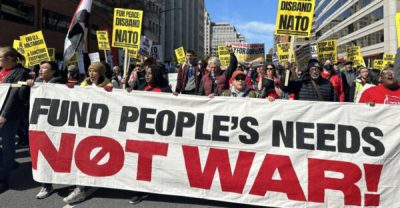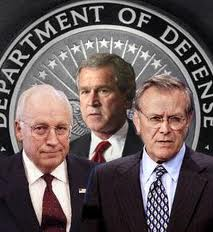Mapping the Parallels of US Conflict: From Vietnam to the War on China

All Global Research articles can be read in 51 languages by activating the Translate Website button below the author’s name (only available in desktop version).
To receive Global Research’s Daily Newsletter (selected articles), click here.
Click the share button above to email/forward this article to your friends and colleagues. Follow us on Instagram and Twitter and subscribe to our Telegram Channel. Feel free to repost and share widely Global Research articles.
Global Research Wants to Hear From You!
***
 On August 4th, 1964, President Lyndon B. Johnson stood in front of the American public and stated,
On August 4th, 1964, President Lyndon B. Johnson stood in front of the American public and stated,
“We Americans know, as do others though some may forget, the risk of spreading conflict. […]
I shall immediately request Congress to pass a resolution to make it clear that our government is united in its determination to take all necessary measures in support of freedom and in defense of peace in Southeast Asia.”
 On October 7th, 2001, on the eve of the US invasion of Afghanistan, President George Bush addressed the nation:
On October 7th, 2001, on the eve of the US invasion of Afghanistan, President George Bush addressed the nation:
“We did not ask for this mission, but we will fulfill it.
The name of today’s military operation is Enduring Freedom.
We defend not only our precious freedoms, but also the freedom of people everywhere.”
He addressed the nation again on March 19th, 2003:
“At this hour, American and coalition forces are in the early stages of military operation to disarm Iraq, to free its people and to defend the world from grave danger.”
On March 28th, 2011, President Barack Obama commented on US intervention in Libya,
“Some nations may turn a blind eye to atrocities in other countries, but the United States of America is different.”
 On October 20th, 2023, President Joe Biden responded to the Hamas attack on Israel and the Russia-Ukraine War:
On October 20th, 2023, President Joe Biden responded to the Hamas attack on Israel and the Russia-Ukraine War:
“I’m sending an urgent budget request to fund America’s national security interests…
It’s a smart investment that’s going to pay dividends for American security for generations, help keep American troops out of harm’s way, help us build a world that is safer, more peaceful, and more prosperous.”
All these speeches and masked declarations of war paint a similar picture: the US, a hero of the world, a defender of freedom, and a protector of the people.
In the bright, lucid light of history, we see differently.
A commonality stretches between each conflict like a woven thread of grim consistency– each of these decisions was an unmitigated disaster. You don’t need to be a foreign policy expert to recognize that. Not only have these conflicts led to thousands– millions– of deaths, but they have also plunged regions into periods of darkness, perpetuating mass poverty, human rights abuses, and political ruin.
Over two decades in Vietnam, nearly 60,000 US soldiers returned home in body bags.
On Vietnam’s shores, more than 2 million are buried.
50,000+ deaths in Laos, 150,000+ deaths in Cambodia from US attacks.
In Afghanistan, an estimated 70,000 military personnel and 46,000 civilians were killed– widely understood to be a vast underestimation.
In Iraq, an estimated 300,000 died from direct violence.
In Palestine, 40,000 and counting, most of whom are civilians– women and children.
But violence doesn’t end at direct warfare.
A study of America’s “War on Terror” estimates approximately 4.5 million people have died from the reverberating effects of war, such as disease and economic hardship. That is the reality of war: it leaves a lasting legacy of death and devastation wherever it goes.
It is easy to look at a number and just see a number. Names, faces, and identities– half-lived lives, and stories of love, pain, and hardship– are so easily condensed into a tally mark on paper. That is what our politicians do. They dehumanize humans in the name of “good intentions,” in the name of protecting American interests– America, a beautiful convergence of multicultural identities, where surely we must understand the emphasis of belonging to humanity rather than a conflated identity of belief and coordinates of birth.
It is so obvious, tragedy eclipses into satire: When did our foreign policy become something out of a poorly written movie where the bad guy declares they must kill millions of people to save the world?
“It became necessary to destroy the town to save it,” said a US major in the decision to bomb the town Ben Tre after northern Vietnam forces overtook the city during the Tet Offensive in 1968, in case you thought that was an exaggeration.
Fortunately, our political fallibility has not gone unnoticed. The parallels are remarkable, as evidence by these rallying cries:
1969: “Hey, hey LBJ– how many kids did you kill today?”
2024: “Genocide Joe has got to go!”
Source: CODEPINK
And indeed, former presidents have expressed regret and remorse over their decision.
In 2016, Obama declared Libya the “worst mistake of his presidency.” Alan Kuperman, a professor at the Lyndon B. Johnson School of Public Affairs UTA wrote,
“In retrospect, Obama’s intervention in Libya was an abject failure, judged by its own standards. Libya has not only failed to evolve into a democracy, it has devolved into a failed state. Violent deaths and other human rights abuses have increased sevenfold.”
It is well agreed, in the dim after-the-fact, that these invasions did no good, and quite a lot of bad. And still our government continues to perpetuate these same narratives as if they have never cracked open a history book and read about the consistent failure of US foreign intervention. Some will call this ignorance– others, greed. The truth is, our politicians are complicit in the war machine and no act of violence is unintentional. They rely on us not to recognize the patterns– and if we don’t, they’ll keep exploiting it. It is obvious we cannot rely on our political leaders to lead with any strength of character or understanding of morality.
We can, however, bring awareness to these grim trends. The cycle remains the same, even after nearly a century. Our foreign policy, anachronistic as it is, is fairly predictable.
Step one: Information warfare
In the US, public support is critical, not only for political and social stability, but also to maintain one’s chances for reelection. You can be sure that any potential conflict will be preempted by the creation of an enemy. This includes an amalgamation strategy of fear-mongering and purposeful intensifying of divisions.
Example: Leading up to US invasions in the Middle East, the region was widely demonized under the guise of religious differences. Even prominent policy advisors like Samuel Huntington fell into the trap of citing religious and cultural difference to be the main motivator of war in the 21st century. This led to extreme Islamophobia in the US and spikes in hate crime.
Step two: Militarization
Next, our government will take those narratives and run with it. Usually it is militarization in the name of deterrence. Accusations about the enemy’s intent to cause global devastation will plague Congressional meetings. Think tanks will fall back to the familiar Cold War era deterrence strategies because nobody seems to have thought of a better idea in an entire decade. The US will then opt to increase military presence in the region. Just in case.
Example: US military presence around Vietnam increased dramatically in response to the fear of communism. Any actions short of war were conducted with unambiguous support.
Step three: Wait for the right spark to light
The US is loathed to make the first move. No political leader wants to be considered as the one who began a war. Instead, they will put all the triggers into play and wait for one of them to fire. Then we can go to war pretending we are without blame.
Example: In August 1964, two US destroyers in the Gulf of Tonkin were sent to intercept North Vietnamese communication in support of the South. These ships were fired upon, which gave the US leeway to announce the need to respond with force.
Step four: War
The president will then make a solemn, resigned declaration of war. We must send troops to defend global peace, they will say. It is for the greater good. We are backed into a corner and have no other options.
Example: President George Bush labeled the 2003 invasion of Iraq a “preventative war,” saying that we must send forces to avoid a worse alternative. Rumors about Iraq’s WMDs were later debunked.
Step five: Failure
It is likely the conflict will be long and protracted. If history is anything to go by, thousands will die. Many of them will be innocent civilians caught in the crossfire. Mass violence will likely lead to chronic instability, economic devastation, and weakening of the state.
Example: Since the US invasion of Iraq, over one million civilians have been displaced, and three million are in need of humanitarian assistance. The US left a power vacuum open, allowing armed militant groups to take over various regions of the country. Political stability still remains out of reach to this day.
Step six: Regret
It could take some time, but eventually, history will catch up. War is rarely considered successful and hardly ever seen in a positive light. This isn’t something that needs any level of consideration– it’s because war is bad.
Example: A majority of Iraq and Afghanistan veterans agree the war was not worth it. A majority of Americans also regret the Vietnam War.
Step seven: Amnesia
So many of us have lived through these past wars and seen the harm they do, not just abroad, but in our own communities. And yet, our government seems to face a chronic case of severe amnesia that echoes through the media and in our own minds. To truly stand for peace, we must remember tragedy and carry all its lessons with us.
Now let’s look at these steps in the context of China, which has been deemed our “next war”:
Step one: Information Warfare
Information warfare has been largely successful. So successful that it’s become a nonpartisan agreement that China is a threat to the US. This isn’t a good thing– war is far, far more likely when both sides of our government agree on it. Even public opinion sways in the same direction. Our media sources are basically in bed with political discourse. Everyone is saying the same thing, screaming it from the rooftops: China is our enemy. We must defeat China to protect our interests. Even if that means ruining the lives of millions of people.
Step two: Militarization
The widespread consensus of China’s danger has always led to a successful hyper-militarization of the Asia-Pacific region. Billions of dollars have been thrown at surrounding China with US military bases. Even now, military spending is at an all-time high. Our government claims they are “protecting” these nations, but there is significant public opposition in Japan, Guam, and the Philippines, where local communities have repeatedly reaffirmed their desire for US military presence to leave.
According to President Biden, we are “standing up for peace and stability across the Taiwan Strait.” Yes, we are standing up for peace with 300+ military bases, 375,000 military personnel, and countless missiles in the Asia-Pacific alone. It is the contradiction to end all contradictions.
Think tanks have already done the calculations. Conflict in the Asia-Pacific would be a disaster for China’s economy, leading to a shrinkage of 20-35% at best. Local populations in the Asia-Pacific region would bear the brunt of the violence. The economic, political, and social instability would devastate the lives of millions of people. The entire world– not just China– would be far worse off. It is clear that war is not the answer. Then again, it has never been the answer.
Step three: Wait for the right spark to light
Though the trigger hasn’t been fired yet, a terrifying number have been put into play. Besides the 300+ US military bases surrounding China (which is especially insane when one considers the fact that China has no military bases in the entire Western hemisphere), the US conducts annual “war games” meant to display military might in the region and antagonize China. Our government has worked overtime to create mini trilateral alliances with other nations in the region, so that if one is pulled into war, they are all pulled into war. The US, which for 45 years has conducted foreign affairs in line with the one-China policy established in 1972, has come closer during Biden’s presidency than ever at reneging on the policy. This is solely due to China’s recent political and economic success. It is not a matter of sovereignty or security; it is a matter of protecting US hegemony.
The chilling reality is that war with China is something we may not walk away from. And though our political leaders repeatedly state their lack of desire to go to war, they are following perfectly in their predecessors’ footsteps. The fuel has been filled. All it takes is one trigger.
As we near the daunting cliff-face of another war, I can’t help but wonder: When will we learn? When will our government truly become an ark for humanity rather than an apparatus of violence, greed, and destruction? Is it really so idealistic to believe that disagreements can be settled without bloodshed? Our world is not the same as it used to be. It is clear that people are starting to wake up– starting to see through the weakening facade of a government that claims it stands for peace, when every action is geared towards war.
Perhaps it will take a millenia, and perhaps our species will not live long enough to see it. As it stands, as we see daily “but-they-did-it-first” squabbles, other threats close in– climate change, which is our biggest security threat to date, goes unconsidered. Nuclear weapons pile up in our backyard, pointed at every inch of the globe as if it makes any sort of sense. And on and on we go, each decade with a new enemy and a new war and a new story of good versus evil, as if it’s not war itself– the US itself– that is perpetuating this stagnation.
*
Note to readers: Please click the share button above. Follow us on Instagram and Twitter and subscribe to our Telegram Channel. Feel free to repost and share widely Global Research articles.
Megan Russell is CODEPINK’s China is Not Our Enemy Campaign Coordinator. She graduated from the London School of Economics with a Master’s Degree in Conflict Studies. Prior to that, she attended NYU where she studied Conflict, Culture, and International Law. Megan spent one year studying in Shanghai, and over eight years studying Chinese Mandarin. Her research focuses on the intersection between US-China affairs, peace-building, and international development.
Featured image source



